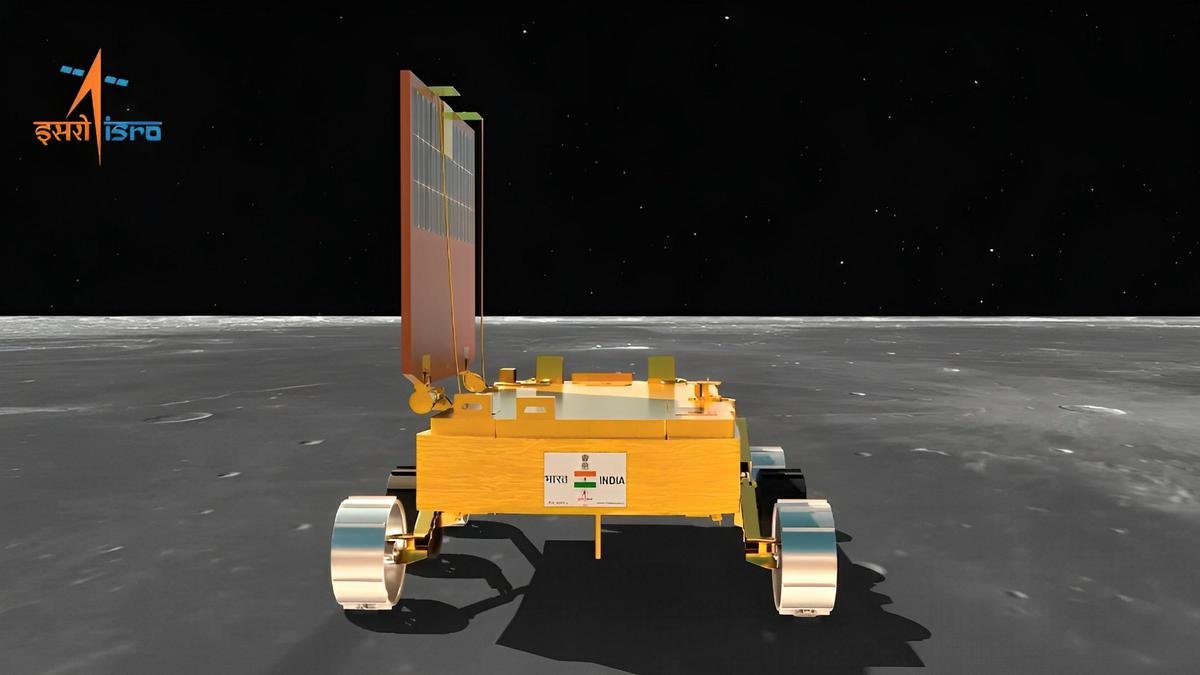
Pragyan rover confirms sulphur at moon’s south pole, searching for hydrogen
The Hindu
Chandrayaan-3’s Pragyan rover has confirmed the presence of sulphur on the moon’s surface, near its south pole, and is still searching for hydrogen, the Indian Space Research Organisation said.
Chandrayaan-3’s Pragyan rover has confirmed the presence of sulphur on the moon’s surface, near its south pole, and is still searching for hydrogen, the Indian Space Research Organisation said on Tuesday.
The Laser-Induced Breakdown Spectroscopy (LIBS) instrument onboard the Chandrayaan-3’s rover has made the first-ever in-situ measurements on the elemental composition of the lunar surface near the south pole. “These in-situ measurements confirm the presence of Sulphur (S) in the region unambiguously, something that was not feasible by the instruments onboard the orbiters,” ISRO said. “Search for Hydrogen (H) is underway,” it posted on X (formerly Twitter).
The LIBS is a scientific technique that analyses the composition of materials by exposing them to intense laser pulses. A high-energy laser pulse is focussed onto the surface of a material, such as a rock or soil, and generates an extremely hot and localised plasma. The collected plasma light is spectrally resolved and detected by charge coupled devices. Since each element emits a characteristic set of wavelengths of light when in a plasma state, the elemental composition of the material can be determined in this way.
“Preliminary analyses, graphically represented, have unveiled the presence of Aluminum (Al), Sulphur (S), Calcium (Ca), Iron (Fe), Chromium (Cr), and Titanium (Ti) on the lunar surface. Further measurements have revealed the presence of manganese (Mn), silicon (Si), and oxygen (O). Thorough investigation regarding the presence of Hydrogen is underway,” ISRO said.
The LIBS payload was developed at ISRO’s Laboratory for Electro-Optics Systems in Bengaluru.

The crowning achievement of American inventor William Painter’s career was, well, inventing the now-ubiquitous crown bottle cap. Oh, and not to forget, the bottle cap lifter to open these crowns, or what we simply call the bottle openers. A.S.Ganesh tells you how Painter changed the bottling industry forever…










